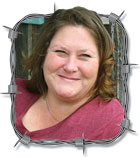I recently spoke to someone who is brand new to the farming industry.
They want to grow row crops, raise cattle, sheep and goats, and have some horses. They have some goats, and asked where to plant corn and beans, when to plant, how much corn and beans to plant, if they should raise pigs and so on. My head was spinning just a bit with all the questions and I couldn’t get a word in edgewise, but it was great to see the enthusiasm. I finally asked how many acres they had … about 15 or 20. I could see the disappointment when I told them they may be limited in what they could do.
“I guess I shouldn’t have bought a farm when I don’t know anything about a farm,” they said.
I pointed out there are still many things they can do with their land, but they need to learn how to use it efficiently. I explained I was not the person to advise them on accomplishing their goals, and they seemed a little happier when I offered some informational and educational recourses.
One of my “big farming dreams” is to grow a record-setting pumpkin. I want to grow one of those pumpkins that takes a forklift to load onto a trailer. Why is this a goal? I have no clue. We didn’t grow pumpkins when I was a kid, and I don’t have much of a green thumb, but I’ve wanted to do it, much to the amusement of many of my friends and family.
I have room to grow one of these monsters, but is it an efficient use of my time and resources?
First, I would have to fence off a portion of the pasture and put in a gate to get an area big enough with eight hours of direct sun. In the fall, I would have to build a 10-by-10 bed for each plant I want to attempt to grow and fill the beds with cow manure compost and soil.
Seeds from a world champion to grow my spectacular squash are upwards of $100 or more each, so those must be handled carefully and started a month before the projected last freeze. Once planted, there are the daily soil checks, weekly fertilizing, weeding, and trying to keep the cats and other critters away from the pricey sprout.
To top it off, to get a big one, you have to pick just one bloom to nurture, keep the vines trimmed to a certain length, make sure the growing pumpkin doesn’t get too hot or too cold, move the pumpkin while it’s growing, put a canopy over it at some point, and too many other chores for one pumpkin.
I guess the front pasture will remain pasture, and my dreams of growing a 2,000-pound pumpkin will go to the back burner. The task isn’t off the table but might be a “retirement” job.
Farmers and ranchers can have big dreams on a small piece of land or bigger dreams on a bigger spread, but they have to know how to do it in a way that works. It might take some modification to the original plan to make the dream come true, but it will happen in time, and dreams are worth the wait.
Julie Turner-Crawford is a native of Dallas County, Mo., where she grew up on her family’s farm. She is a graduate of Missouri State University. To contact Julie, call 1-866-532-1960 or by email at [email protected].






